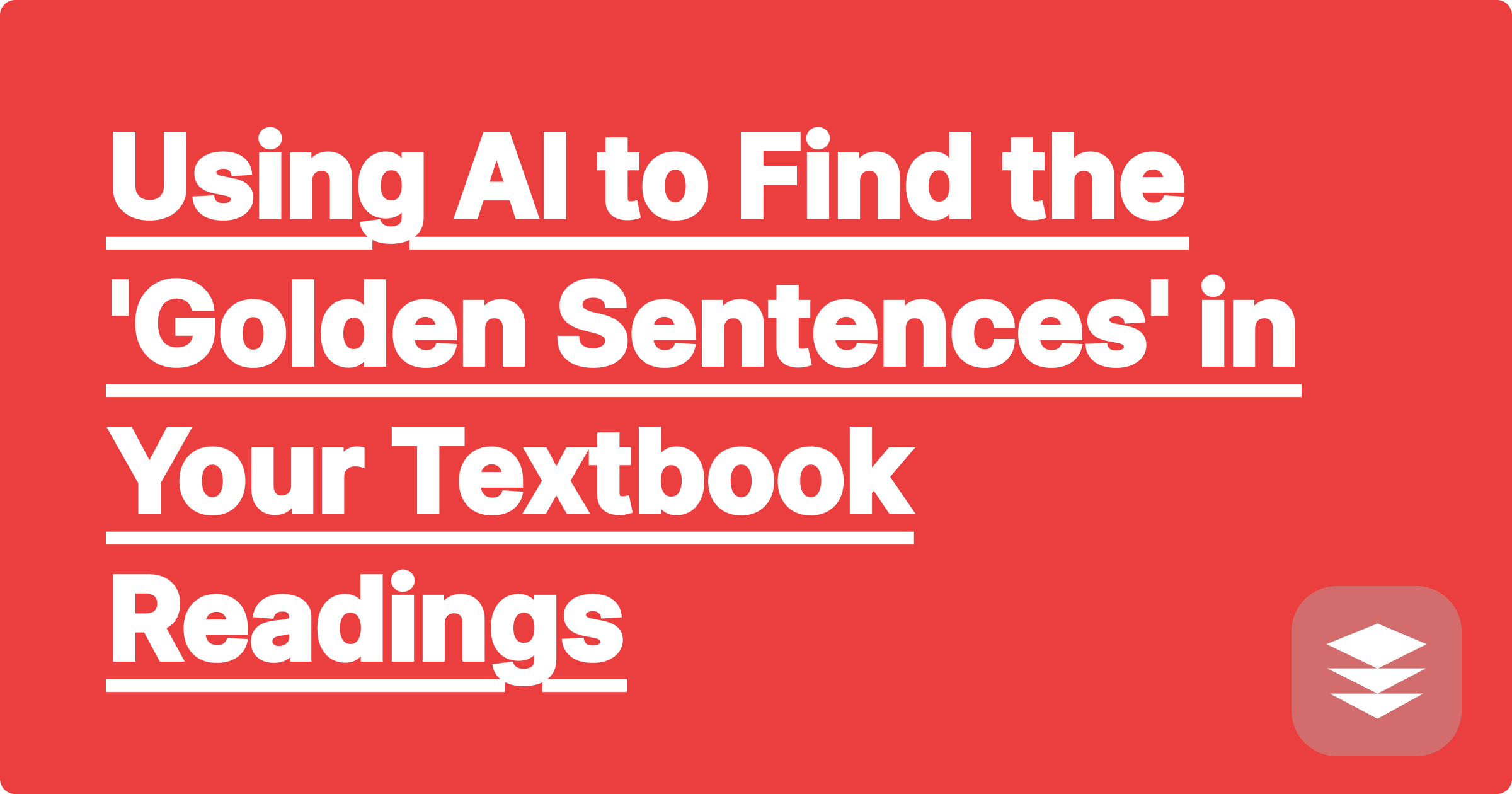
You've been assigned a 40-page chapter from your textbook. You know you're supposed to read it, but you also know that not all sentences are created equal. Buried within those 40 pages are probably 10-15 "golden sentences"—the core definitions, the key theoretical claims, and the thesis statements that will almost certainly appear on your next exam.
The challenge is finding them. You can spend hours reading and highlighting, trying to guess what's most important. Or, you can use AI to do it for you with surgical precision.
A powerful ai textbook key points finder does more than just summarize long articles. It analyzes the structure and language of the text to identify and extract the sentences that carry the most weight. A tool like GPAI Cheatsheet is designed to do exactly this.
Most summarization tools just shorten the text. They might grab the first sentence of every paragraph, or use an algorithm to find statistically "important" words. This often fails in an academic context.
You don't just want a shorter version of the text; you want the most important parts of the text, preserved in their original, precise form.
The GPAI CheTatsheet engine is trained to think like a student who is an expert highlighter. When it analyzes your textbook chapter PDF, it looks for specific signals of importance:
The process is simple:
[Image: A screenshot of the GPAI Cheatsheet interface. On the left is the original text from a textbook PDF. On the right are several "Knowledge Blocks" created by the AI, one labeled "Key Definitions" and another labeled "Core Thesis," each containing exact sentences pulled from the text. Alt-text: An AI textbook key points finder extracting golden sentences from a document.]
This AI-powered workflow can revolutionize how you approach your weekly readings.
A textbook is a firehose of information. You need a filter. An AI key points finder is the most powerful filter available to a modern student. It allows you to tune out the noise and focus your valuable mental energy on the sentences and ideas that will truly impact your grade.
[Stop re-reading everything. Start focusing on what matters. Try GPAI Cheatsheet today and let the AI find the "golden sentences" in your next reading assignment. Sign up now for 100 free credits.]
How to Turn Your Professor's Disorganized Whiteboard Notes into a Coherent Study Guide
The 'Knowledge Block' Method: How to Build a Cheatsheet That You Actually Remember
How to Create a 'Master Formula Sheet' from All Your Courses with AI
Using AI to Find the 'Golden Sentences' in Your Textbook Readings
From Audio to Actionable Notes: A Guide to Using the AI Notetaker
How to Create a Visual Cheatsheet with AI-Generated Diagrams and Mind Maps
The 'Compare and Contrast' Cheatsheet: Using AI to Understand Nuances
How to Turn Your Class Syllabus into a Semester-Long Study Plan
The 'Definition-Example' Pair Method: Building a Practical Study Guide with AI
How to Use the AI Notetaker for Foreign Language STEM Courses